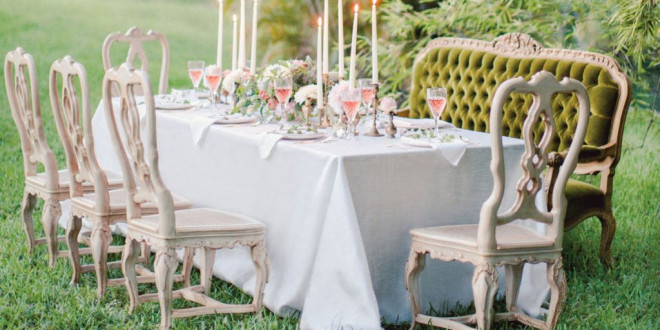[ad_1]
An important part of your wedding reception planning is the table layout. If done well it can encourage mingling and conversation among guests.
It does not matter how long your guest list is the table layout must be carefully planned.
The very first thing you need to do is to give the entire room an efficient overall table plan, then plan a good design for the individual tables.
ROOM LAYOUT
The kind of tables you use at your reception depends on the number of guests and the shape of the available space such as a long narrow room works better with long rectangular tables and round or square tables works better in an uneven room shape.
Often a combination of round and square tables are now being used together for an interesting look.
Once you know how many tables will be needed you can then start the room layout.
At this point, consideration must be made for dancing space, if that's part of your reception. Plus you need to allocate space for movement to the restrooms, maybe a buffet and a bar area (if necessary), and for general mingling.
Be sure that the lighting will be adequate for dining if an evening affair and that sunlight is not a problem if a daylight reception by placing the tables to take this into consideration.
The head table is, of course, the most important, so you need to keep that table very visible.
Often this table is tiered or upgraded and wedding backdrops and special lighting is used to highlight the table.
Round tables are generally not used for the head table and chairs are placed so that everyone at that table is facing the other guests.
The wedding cake table is a centerpiece for your reception and needs to be positioned in a very visible location.
Be sure there is plenty of room to walk safely around the table without the cake getting damaged, and so that the many pictures that are taken there can be freely taken from all angles.
A DJ or band table may be needed and it is best to place these tables near the dance floor.
TABLE LAYOUT
After the general room layout is figured out the individual table seating chart can then be planned after the basic room table layout is decided.
You now must think about the things that will make your guests most comfortable and the party enjoyable.
Do not cram too many guests at one table, but give them room to move and mingle.
If there are children at the wedding they may be grouped together if they are old enough to sit away from their parents and youngger children should always be seated with at least one parent, grandparent or guardian.
Guests who attend your wedding together should always be kept together. Note that this includes members of your bridal party even if both are not in the bridal party.
Gift tables should be placed away from the entrance for security reasons.
Your guest book table needs to be placed near the entrance so it is visible as guests enter.
Many reception venues will help in mapping all this out by having sample layouts available as guides; you may also check online for suggestions.
Another thing you must consider is you need to seat guests together with those they will be comfortable with. This could be done by age, hobbies, careers, personal relationships or interests.
Your table decorations, while looking beautiful, should be chosen so they are not an interference to any conversations at the table or so large they restrict guest space.
Good planning of your wedding reception table layout in advance will help your reception go much more smoothly and will be definitely more enjoyable to you and your guests.
[ad_2]
Source by Tiffany Cole

